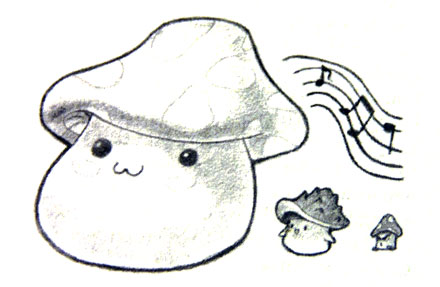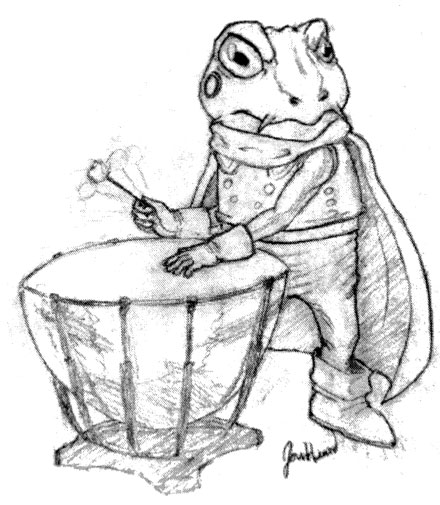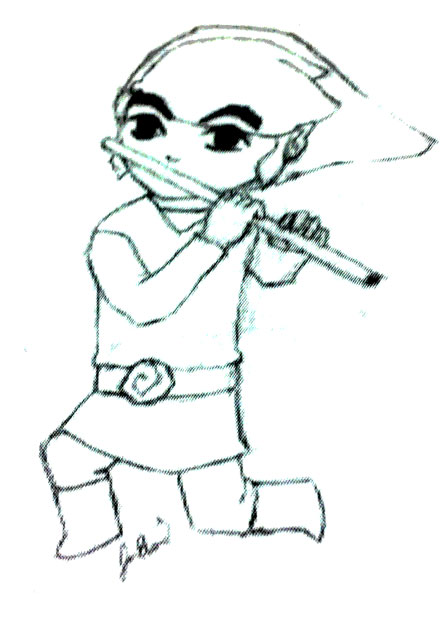An email arrived in my inbox earlier last week that happened to have an interesting tidbit of news in it: there would be a concert over the weekend, and that concert would be all about video game music! The Gamer Symphony Orchestra (GSO) from the University of Maryland would be the group performing, and the cost was free, deliciously free.
Earlier this year I had a chance to catch Video Games Live, and GSO performed a couple of pieces with them during their show, so I am not wholly new to the sound of this group. But how did they do on their own? Let’s find out.
Note: I am coming into this review with at least twelve years of progressive music instruction that culminated in a degree in the field. I am not pointing that out to sound uppity, but as a basis for some of the constructive criticism within.

Beginnings
Founded in 2005 on Maryland’s campus with but a handful of students, the Gamer Symphony Orchestra has grown to over 120. The group is completely run by students and its arrangements are created mostly by its members. The program reads:
…It is the world’s first college-level ensemble to draw its repertoire exclusively from the soundtracks of video games. The ensemble is entirely student run, which includes conducting and musical arranging.
As someone who spent a good deal of time in college playing games among likeminded musicians, I am pretty certain I would have jumped at the chance to perform music from games had that been an option, and I enjoy that fact that at least someone has put together a group like this. It is really neat, and I would be lying if I said I wasn’t at least bit envious.

Lower the Lights
I took my seat on the pretty mild afternoon of December the first in the Dekelboum Concert Hall within the Clarice Smith Performing Arts Center on the University of Maryland campus. This building is right across the street from the football stadium, and I could not help but think about whether or not during games sounds of shouting crowds and drum cadences leak into this adjacent structure. The hall stands roughly three and half stories high, lit largely by tall windows on the second floor. Around me sat an eclectic crowd from all walks of life. Mostly, the crowd was made up of college-aged students (which makes sense), but I did notice more older individuals than I would have imagined. My hopes are that they arrived of their own curiosity, looking to hear new music for its own sake, but my jaded half believes they came to support someone sitting on stage and could care less about video game music. Maybe I just grew up in the wrong generation.
Large blinds began covering the windows, signaling that the performance was about to begin. Ten pieces were listed in the program, and to start the show, a small ensemble came on stage to perform Que Sera, Sera from Namco’s Katamari Damacy. Conductress Kira Levitzky had some trouble describing the game in the few sentences she was afforded, but to her credit, Katamari is not something so easily described. I thought of the septuagenarian sitting in front of me and what her thoughts must be like. “You roll a ball as big as the sun? Well I never!” The lounge stylings of Que Sera, Sera began shortly after in earnest, and I felt the singer did a pretty great job of matching the timbre of what you would expect a lounge singer to sound like. If only instead of standard chairs we were all sitting in half-circular booths with too-stuffed padding and round tables.

After lounging out, the orchestra proper appeared on stage, and a medley of music from The Legend of Zelda: Twilight Princess was performed. Although I have played the entirety of this game, no unique themes from it that reside in my long-term memory, and as a result only the motifs inherent in all Zelda titles were the ones I picked up on. Still, hearing those familiar melodies live is always a good time.
Next was a selection from Kirby Super Star. Three themes from the game made their way into this piece, but unfortunately I do not have a very personal relationship with the Kirbster, so this particular piece hit me with its face value beyond some phrasing that is apparent in a lot of Kirby music that I believe is engrained into my skull from years of playing the Fountain of Dreams level in Super Smash Bros.: Melee.
Following this came an interesting medley of music arranged by the other conductor of the group from Donkey Kong 64. The piece, which was solely for piano, was performed by the arranger. It has been years since plopping that yellow cartridge into my N64, and I suppose I had forgotten all of the music within. It probably has something to do with me putting a mental block on the title due to the amount of bananas I was forced to collect. The piece and its performer jumped fairly nimbly through quick and slow paced passages, slowing to one point with some low register arpeggiation reminiscent of Beethoven’s Moonlight Sonata. At least, that’s what I believe I heard. I would need to hear it again to make sure, but that certainly made my ears perk up. Sadly, I heard no signs of the DK Rap, and although I had my hands together, ready to clap, this piece did not take me through the monkey rap. Besides this, though, the arrangement was interesting and was performed well.
Before the intermission, the final piece of the first half was taken from everyone’s beloved Chrono Trigger and Chrono Cross, particularly the works Reminiscence, Chrono Trigger Theme, Scars of Time, and To Far Away Times. You can never go wrong with Chrono Trigger.

The Second Half
Once the crowd settled, another small ensemble performed an arrangement from the flash game Age of War entitled Glorious Morning. The tune was militaristic, as you might imagine, but upbeat with a snare drum dutifully tapping away behind flute and other synthesized instruments.
Now for the meat: Symphony for the Hero of Time Movement II: the Gerudo Temple. This piece will be familiar to anyone who has played The Legend of Zelda: Ocarina of Time or happened to get this amazing version with their Skyward Sword purchase last year. The GSO did an admirable job of bringing this music to life, and no one doesn’t like the Gerudo Valley theme, but there were some balance issues that marred an otherwise good performance.
For the World of Warcraft fans, know that the GSO has at least one piece under its belt from this game that never ends. Nightsong, the de-facto theme of the Night Elves and performed in Darnassian, filled the hall. Pickleaxe, my Night Elf Rogue, would be proud.
A arrangement from Maplestory, The Dark Future of Maplestory, was performed next. I know hardly anything about this game other than my little brother likes to play it, but apparently the game has some pretty good music. This piece lives up to that idea, and I was actually pretty surprised at its musicality and depth. All I have ever seen of Maplestory are characters kind of hopping around hitting each other, but as I write this sentence while looking at the program I understand why this piece was good: Joe Hisaishi was the original composer. If that name doesn’t sound familiar, then maybe Howl’s Moving Castle, Spirited Away, or Nausicaä does. He composed the scores to those and many of the other Studio Ghibli films.
East Meets West
The final piece of the afternoon, entitled in the program Maria & Draco, was the opera performance from Final Fantasy VI. Considering that game happens to be my favorite of all time, I was pretty excited to hear this. There are three main characters in this performance: Maria, Draco, and Ralse. Long story short, the East is fighting the West, and Draco has to save Maria from Ralse before Ralse can marry her. In the game, playable character Celes takes on the role of Maria because she looks exactly like the woman who normally performs the part. You have to learn the correct lines backstage and select them when they come up in the music. Also, there is a giant, pun-spewing squid that you fight on stage!
For this real life performance, three of the choral members did a great job in the roles of these three characters, and this piece overall was probably my favorite. Utilizing the full orchestra, the ten minute piece hit highs and lows and everything in between in this brief yet satisfying opera of Maria and Draco. It was great.
As an encore, the group performed Liberi Fatali from Final Fantasy VIII, the only good thing to come from that game (Cheer up, Squall). You could kind of tell that the performers enjoyed this piece because it seemed to have the most passion behind it. I assume that music from Final Fantasy games is a pretty big driver for many in the group (I learned several piano renditions of FF tunes in college myself), so I can see more individual work might be put in to some of these pieces that resonate with gamers and musicians and especially gamer musicians.
Suggestions
As I understand it, the Gamer Symphony Orchestra pulls its members from anyone who would like to join on a first-come-first-serve basis, sans auditions. This approach certainly would be great for students who might not otherwise be able to get into a performing group. But this also most likely has some impact on musicality, which seems as though it might be an internal discussion, too, as the last line of the history page for the group reflects: “Financial hardship remains an area of concern, as does whether the GSO emphasizes camaraderie or musicianship…”
Considering this, if I had a recommendation for a group of all skill levels to look to work on, it would be to seek out balance issues. Gerudo’s Valley theme, in particular, had sections overpowering others. The hand drums or bongos and other percussion used as a driver for the piece were barely audible, and the brass seemed to enjoy too much their fortissimos. I cannot fault them, because I am sure it is fun being both a big part of the melody and the accent to the melody, but if that means drowning out everyone else then it might not be worth it. In this particular piece, too, the higher octaves the trumpets reach seemed to be too much for some, resulting in some unsavory blats.
Along these same lines, the miking of various things seemed off. The piano, for instance, was at full stick and also miked, so it always felt a little strange. The 30 piece chorus was fully miked, and I wish I could hear these things without the filter of the large speaker battery that was hanging from the ceiling. Maybe the miking was absolutely necessary, I do not know, but in the end I always noticed it and I wish it wasn’t something I was paying attention to.
Lastly, for the gentleman playing the vibes: Play the heck out of those things. Play them as loud as you can until the conductor tells you to stop. It’s always unfortunate to not hear such a beautiful instrument. I have been behind those bars and I know what it’s like. Vibes are tough to get to speak from behind a full ensemble.
I hope all of this doesn’t sound too picky. I am trying not to sound like a jerk. But these particular issues were ones I happened to notice that could be solved with a bit more individual practice and a bit more listening among members to their compatriots in the orchestra.
Thanks For Playing
After the final piece I headed outside, walking back around the giant football stadium. I heard some terrible pop music echoing off of the bleachers in what looked to be a field hockey or soccer field, creating a reverb cacophony. No one was on the field, but music was playing. I thought of the elderly woman that sat near me in the concert hall for some reason. Maybe that woman wasn’t just there to see a relative. Maybe she was there out of sheer curiosity and gained a new respect.
So keep it up GSO. I look forward to hearing more performances and seeing how the group improves, and if you happen to be able to catch a performance, I would certainly suggest it.